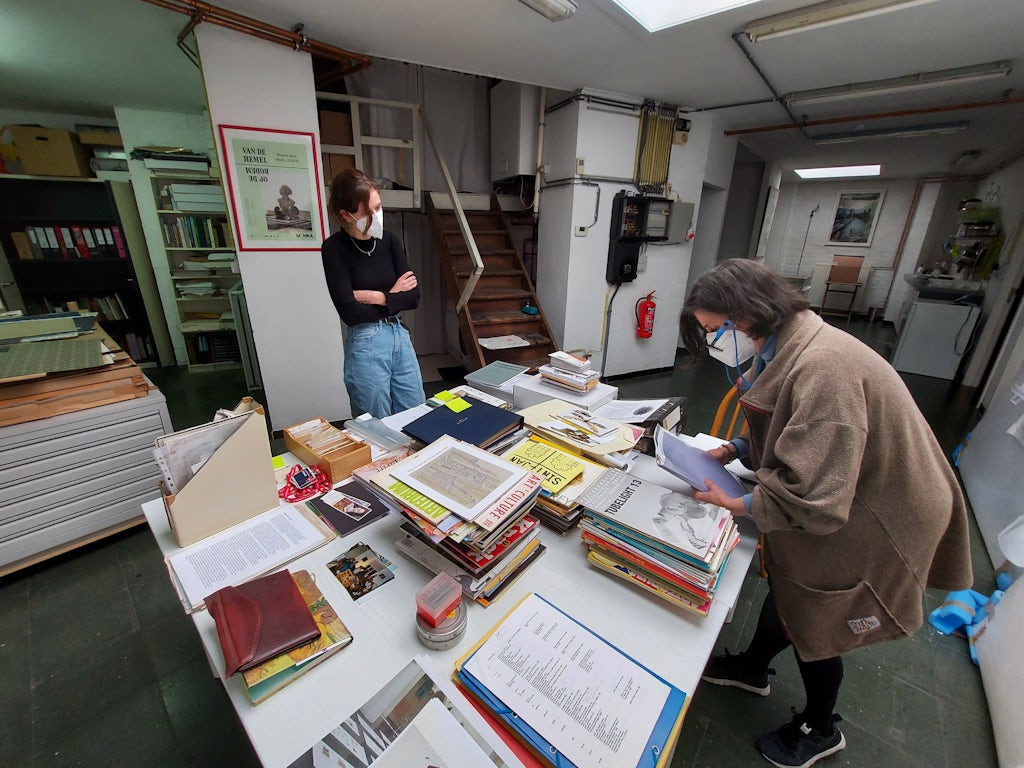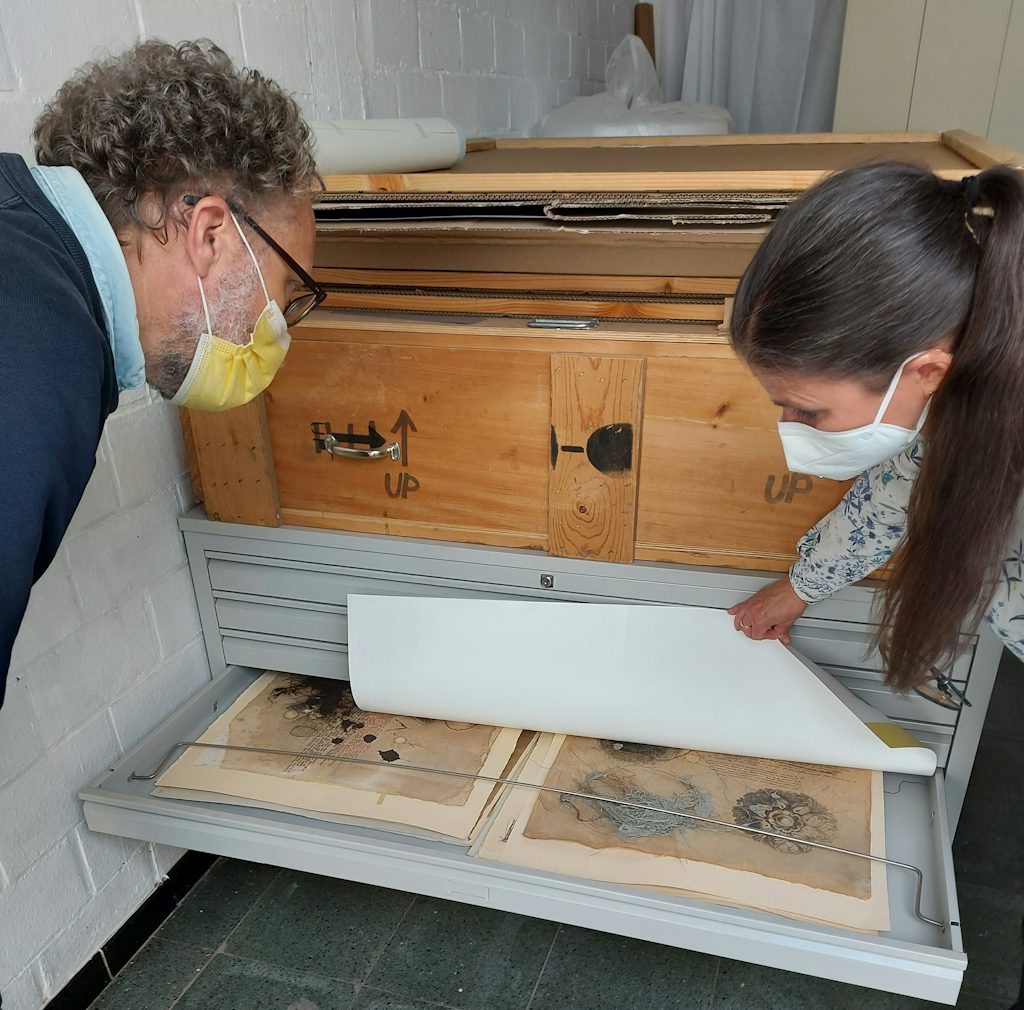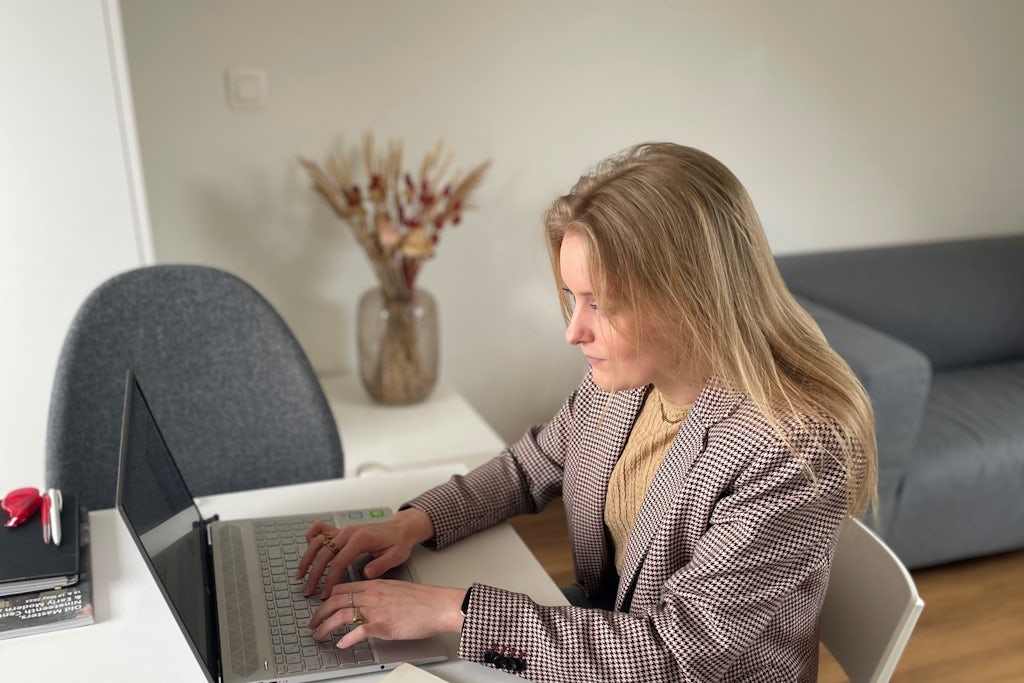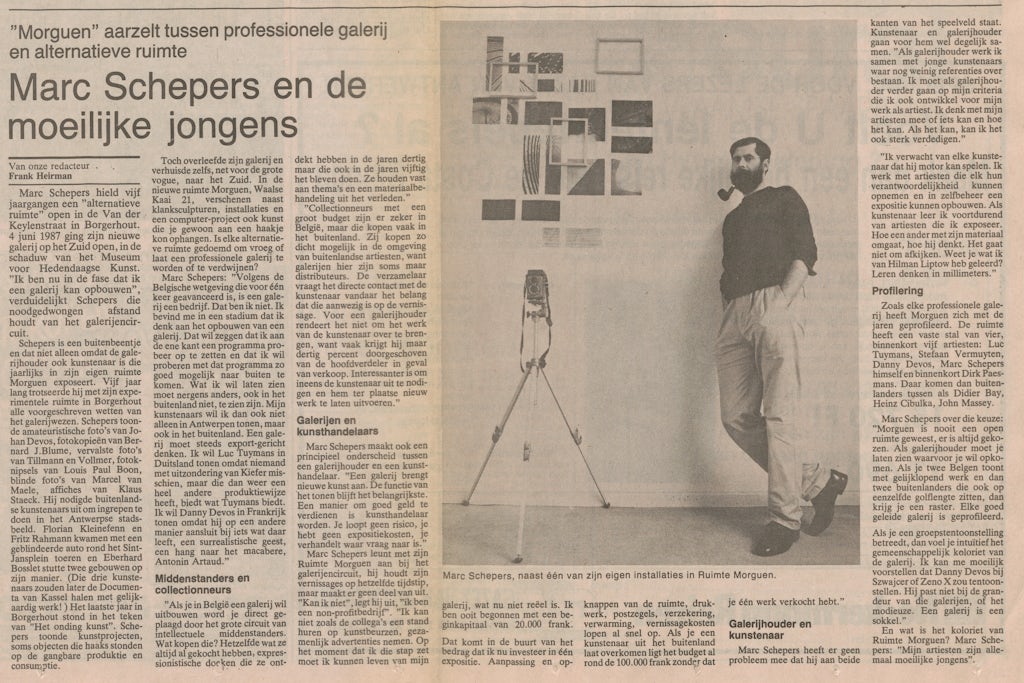The Archive in its Many Forms: Ricardo Brey
Since the spring of 2021, the CKV has been guiding artist Ricardo Brey (°1955) and his wife Isabel in mapping and preserving his archive.
The Ricardo Brey archive, at least the oldest part of it, has come a long way. The oldest pieces can be located in 1970s Cuba, the artist’s native country. The rest of the archive provides a good look at the second part of Brey’s artistic career: from his early years in Europe and his participation in documenta IX in Kassel (1992) to recent exhibitions and publication projects.
The archive contains, among other things, photos, correspondence, printed matter, documentation about exhibitions, (newspaper) clippings and articles in magazines, notebooks, accounting documents, project applications and contact details. In addition, many publications are kept at the archive. Apart from to the analogue material, there are also digital files, which is characteristic of a hybrid contemporary archive.
The CKV will make several site visits to the artist’s studio in Ghent, which will result in a placement list and a global archive description. As a service organisation, the CKV team supports the records creator in this process. Later, the latter can build further on this to make an inventory of the archive in even more detail, and to make it accessible. The CKV has already called in intern Vivian Bredek from the art sciences programme at KU Leuven to more thoroughly open up certain subseries in the archive. At the end of the ride, the archive should be neatly described and packed in acid-free boxes.

CKV and Isabel Brey at work in the archive, 2022. Photo: CKV.
Although the focus of CKV’s operation is on the archive, Brey’s oeuvre – in his case, a very diverse one, from the Boxes to paintings, installations, drawings and sketches – cannot be ignored in this story. As Isabel Brey aptly put it: ‘the archive of the work’ also requires the necessary attention. Here, the basic step that counts is a consistent and complete registration of the oeuvre. Questions such as ‘What software do we use for this?’ and ‘What information must be registered, and can we develop a model for each subcollection?’ come to the fore.
Thinking ahead, we can also look at other ways of documenting the oeuvre. For example, the Studio Ricardo Brey already did some tests with filming the unpacking of Brey’s famous Boxes. The Boxes, as Ricardo Brey described, are an attempt to represent the intensifications of internal modes and their relationships in spatial terms; and what results is a “hermeneutics of the soul” that creates “a topography of the mind.” It would also be interesting to map and document these underlying ideas and the connections that the artist saw between them.
Want to read more about the artist and his work? Visit Brey’s page on his gallery’s website , or his personal website.
(EG)

Isabel Brey shows drawings from Ricardo Brey, 2021. Photo: CKV.


